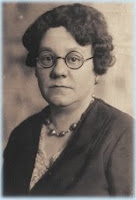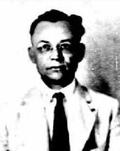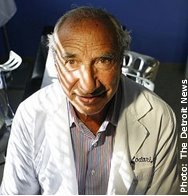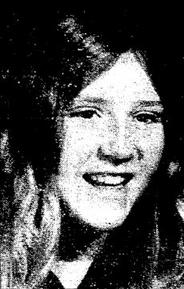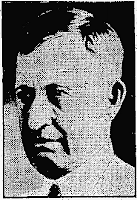The most common profession of abortionists in the illegal era were physicians. Chicago was a particularly genial place for these practitioners in the late 19th and early 20th centuries due to police corruption. Even multiple dead patients were not enough to take a physician-abortionist permanently off the streets. We will see this in the cases we remember today.
Dr. Louise Achtenberg
On May 6, 1924, 24-year-old
Madelyn Anderson died at Chicago's Washington Park Hospital from a criminal abortion perpetrated that day. On May 13, Dr. Louise Achtenberg was arrested for Madelyn's death. Achtenberg was indicted for felony murder on May 15.
Achtenberg already had a bad record as a criminal abortionist. In 1907,
Dora Swan had died in a Chicago hospital after an abortion by
Louise Achtenberg. "Louisa Achtenberg," identified as a midwife, had been implicated in the 1909 abortion death of
Florence Wright. An abortionist identified only as Achtenberg was implicated in the 1921 abortion death of
Violet McCormick.
It would seem that the same woman, Louise Achtenberg, was responsible for all four deaths. She was identified as a midwife in 1909 -- a term commonly used to describe obstetricians, particularly if they were female.
Dr. Warner
The year was 1920.
Frances Collins was a 34-year-old homemaker mother of a 16-year-old and a 6-year-old when she discovered that she was pregnant. She informed her husband, Jerome, then asked a friend where to go to procure an abortion. The friend recommended
Dr. Warner, telling her, “Go over and see him. He might be able to fix you up.” Frances went to Warner's office on West Polk Street in Chicago some time in early April, where he did something with an instrument to have “her womb opened up.”
After returning home, Frances summoned Jerome from his job as a printer and told him she was “unwell.” She must have indicated that the illness must have something to do with her pregnancy, because Jerome later testified that he asked her, “Natural?” She told him no, which Jerome knew meant that she had undergone an abortion, as she had, by her own admission, “done many times” before.
Frances rested afterward, and seemed to have recovered, but by the end of the month she was bleeding vaginally, “pretty hard,” as Jerome put it. He called her mother to come and care for his wife. Her condition continued to deteriorate, with Frances developing vomiting and chills.
Jerome testified that Frances never gave him any details about the abortion – but nevertheless was able to summon Warner as the doctor who had performed the abortion. Warner came to the Collins home two or three times to look after his patient, with no improvement in her condition. Finally, at the end of April, somebody summoned Joseph T. Woof, the family doctor, who hospitalized her. He testified that he knew that she'd sought abortions in the past, against his advice.
Frances died on May 6. During the autopsy, it was discovered that Frances actually had an ectopic pregnancy. Her "many" prior abortions made her high-risk for this dangerous condition, so in a way the previous abortions probably contributed to her death as much as the final one. Given the state of medicine at the time, it's unclear how likely France was to survive an ectopic pregnancy had she sought obstetric care rather than an abortion, but her efforts to have her already doomed baby killed certainly hastened her death.
Dr. Lucy Hagenow
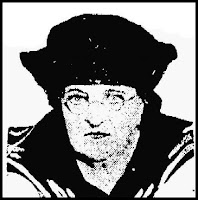 |
| Dr. Lucy Hagenow |
At 6:30 on the evening of May 2, 1907, 26-year-old Austrian immigrant
Annie Horvatich asked her new husband, Michael, to accompany her to the home of Dr.
Louise Hagenow. It was late by the time they arrived. Though she didn't bring a change of clothes or any type of overnight bag, she asked Mike to look after her children (She had three from a previous marriage.) and to come and see her on Saturday.
Mike, who told his story through a translator, said that he didn't know Hagenow and didn't know what his wife's purpose was in the visit -- a claim that isn't held up by the letter he says he got from her the next day assuring him that there would be no "serious happenings" during her stay.
Annie Sickens and Dies
Mike went to Hagenow's home on Saturday afternoon and found his wife sitting up in bed. She told him she was unwell and sent him home, saying she would not be returning home until Monday.
On Sunday, Mike got a phone call to go to Hagenow's place. He arrived at 10 p.m. to find his wife very sick. A Dr. Rasmussen was also present. Mike remained at Annie's side during the night, noting that by morning she appeared to be much worse. He went to the home of Mary Galavitch, who could speak English and thus serve as a translator. When Mike and Mary arrived, Hagenow met them and told them that Annie had died at 5 a.m.
The Business With the Undertaker
Hagenow gave Mike a business card for a neighborhood undertaker. Mike indicated that he'd prefer an undertaker that he knew. He sought out W.J. Freckleton, who went to Hagenow's home to pick up Annie's body at around 5 p.m. He said that Hagenow told him that he should return after dark to take Annie's body out the back way. He returned at about 9 p.m. with an assistant, and found it very difficult to get Annie's body down the narrow staircase. He said that Hagenow told him that her regular undertaker never reported any trouble getting bodies out down that staircase.
The Truth Comes Out
The funeral was held, Annie buried, and it seemed as if Mike and the children would be getting on with their lives as best they could. That changed on May 13. The Cook County coroner, attended by Annie's brother, John Sneller, exhumed Annie's body. A post-mortem examination revealed that although Annie's death had been attributed to pneumonia, her lungs had been quite healthy and normal -- as were most of her internal organs. It was in her pelvis that the true cause of death was found. Her uterus was lacerated, with the top of the uterus torn nearly off, causing fatal peritonitis. From the condition of her uterus, the doctors gauged that she had been about four months pregnant, but there was no sign of the fetus, which evidently had been successfully killed, removed, and disposed of.
Hagenow's Claims Ring Hollow
Hagenow admitted that Annie had come to her place on the 2nd and died on the 6th, but insisted that Annie had been bleeding vaginally upon her arrival. She insisted that Annie told her she had seen a doctor on the South Side who had "brought her around" (i.e. done an abortion). Hagenow's claim that she hadn't performed an abortion on Annie wasn't very credible, given her history. She advertised consistently in Chicago daily papers, ads reading, "Dr. Louise Hagenow; licensed physician; expert; twenty seven years; female diseases; a new scientific, painless method; no operation; good results...." " In short, she was an open and known abortionist.
Also entered into evidence in the trial was the dying declaration of
Marie Hecht, who died from one of Hagenow's "scientific, painless" abortions in 1899, as testified to by the police officer who had taken the statement. Likewise entered into evidence was the testimony of a doctor who Hagenow had brought in to help try to save the life of a young woman Hagenow had disemboweled in the process of an abortion sometime ten or fifteen years prior to the trial over Annie's death -- which would mean this woman could have been
Minnie Deering (1891),
Sophia Kuhn or
Emily Anderson (1892),
Hannah Carlson (1896), or another as of yet unidentified woman. A police officer also testified about taking the dying declaration of
Lola Madison. To top it off, during cross-examination, Hagenow admitted involvement in the abortion death of
Hannah Carlson.
An Appeal Denied, a Sentence Pronounced
The appeals court noted, "had the evidence shown that Annie Horavitch was the only pregnant woman whom [Hagenow] had caused to miscarry or abort, it might not have been unreasonable to presume that she did so in good faith and for the purpose of saving the woman's life. .... [but for] 27 years [Hagenow] had been constantly engaged in producing miscarriages and causing abortions... [and] she kept a place for the treatment and care of women upon whom miscarriages and abortions had been caused and performed; ... she was surrounded at her house by men and women engaged in the business of causing and producing criminal miscarriages and abortions, and ... she had caused the death of several women upon whom she had caused miscarriages and produced abortions within a few years prior to her indictment for causing the death of Annie Horvatich ...."
Hagenow, nearly 60 years old at the time of her trial, was sentenced to 20 years in prison for Annie's death.
Hagenow, who had already been implicated of the abortion deaths of
Louise Derchow, Annie Dorris,
Abbia Richards, and
Emma Dep in San Francisco, would be released from prison to be implicated in the abortion deaths of
Lottie Lowy,
Nina H. Pierce,
Jean Cohen,
Bridget Masterson,
Elizabeth Welter, and
Mary Moorehead.















